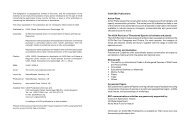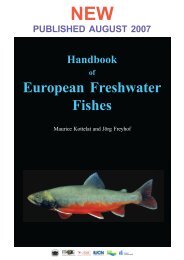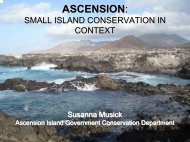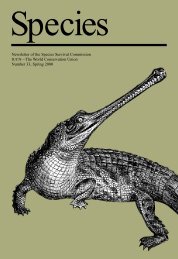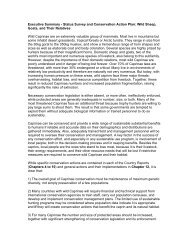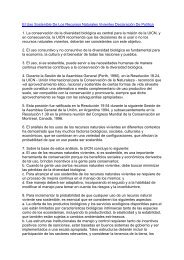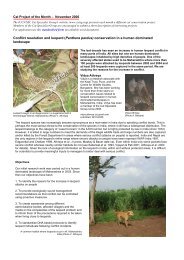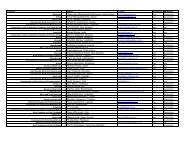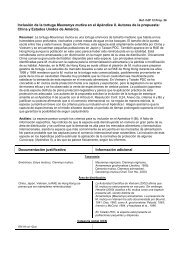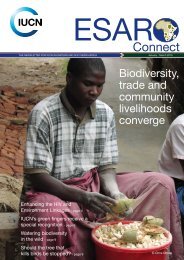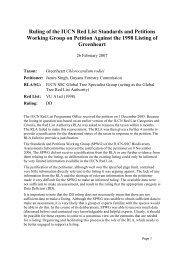Planning education to care for the earth - IUCN Knowledge Network
Planning education to care for the earth - IUCN Knowledge Network
Planning education to care for the earth - IUCN Knowledge Network
Create successful ePaper yourself
Turn your PDF publications into a flip-book with our unique Google optimized e-Paper software.
Australia: <strong>education</strong> <strong>for</strong> <strong>the</strong> Great Barrier Reefvalue of <strong>the</strong> Reef and occupies 950 of <strong>the</strong> 2,000 licensed fishing boats. Thereare about 600,000 recreational fishermen in Queensland and many go fishingon <strong>the</strong> Reef each year.There is often conflict between <strong>the</strong> various users of <strong>the</strong> Reef and <strong>the</strong> groupswhich want <strong>to</strong> see <strong>the</strong> Reef maintained in its pristine state <strong>for</strong>ever. Thesustainable level of exploitation <strong>for</strong> some purposes such as line fishing andbot<strong>to</strong>m trawling has already been reached in certain parts of <strong>the</strong> Reef. Runofffrom mainland activities containing suspended solutions which includenutrients, pesticides or sewage may be having a high impact on inshore reefs.The development of resorts and marinas is also affecting <strong>the</strong> coastalecosystems.Zoning systemsThe Great Barrier Reef Marine Park is not a national park. It is a multipleuseprotected area, fitting <strong>the</strong> classification system used by <strong>the</strong> InternationalUnion <strong>for</strong> <strong>the</strong> Conservation of Nature (<strong>IUCN</strong>). The Reef is also included in<strong>the</strong> World Heritage List as a natural site.Zoning is used <strong>to</strong> separate conflicting activities. Ra<strong>the</strong>r like a <strong>to</strong>wn plan,zoning provides different levels of protection within <strong>the</strong> park, ranging fromgeneral use zones with almost no restrictions <strong>to</strong> zones where almost noactivities are allowed. The only activities prohibited throughout <strong>the</strong> park areoil exploration, mining (o<strong>the</strong>r than <strong>for</strong> research), littering, spearfishing withscuba, and catching large specimens of certain fish. The three maincategories of zone are:• General use zones (two types): most activities including commercialand recreational fishing are permitted (bot<strong>to</strong>m trawling is prohibitedin one of <strong>the</strong>se two types);• Marine National Park zones (two types): only scientific, <strong>education</strong>aland recreational activities;• Preservation and scientific research zones: no activities o<strong>the</strong>r thanstrictly controlled scientific research.Special management areas have been created <strong>for</strong> s<strong>to</strong>ck replenishment inparticular sites, with detailed and flexible planning.Most zones are determined <strong>for</strong> <strong>the</strong> life of a zoning plan - generally six years.Zoning <strong>for</strong> <strong>the</strong> entire park was completed in 1988.Role of cooperationThe Great Barrier Reef Marine Park Authority (GBRMPA), in conjunctionwith o<strong>the</strong>r Reef management agencies such as <strong>the</strong> Queensland Departmen<strong>to</strong>f Environment and Heritage, uses a range of community <strong>education</strong> and135



